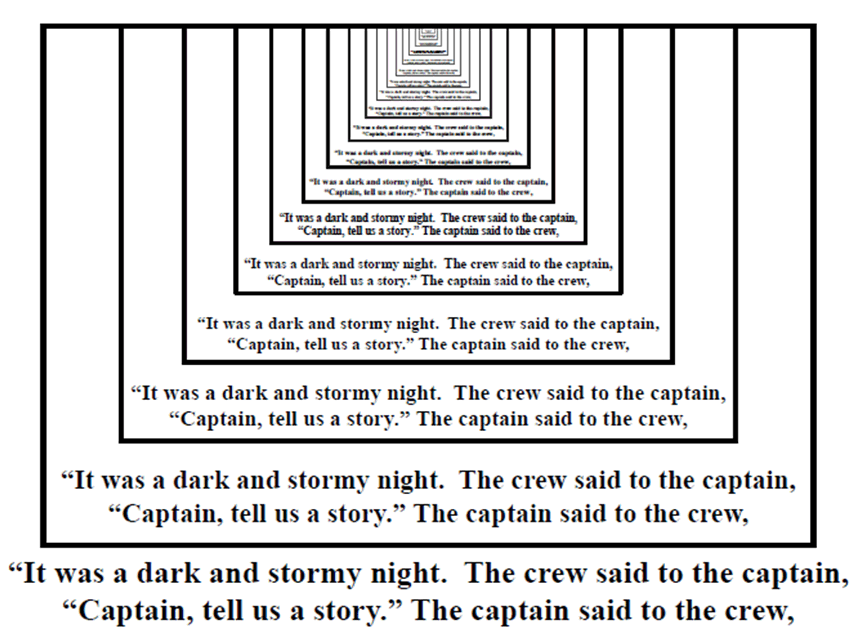Story Within a Story
It was a dark and stormy night. The crew said to the captain,
"Captain, tell us a story!" The captain said to the crew:
"It was a dark and stormy night. The crew said to the captain,
"Captain, tell us a story!" The captain said to the crew:
"It was a dark and stormy night." ...
This story has a story teller that tells the same story and it goes on forever. The following code prints the story by defining a function called story. After printing out the beginning of the story, it calls itself to print the same story that the story teller says. However, this code never ends.

# A story that never ends
def story():
print "It was a dark and stormy night. The crew said to the captain, "
print "\"Captain, tell us a story!\" The captain said to the crew: "
story()
story()
In practice, we need to specify a point to stop. Otherwise, our program will run forever and eventually run out of memory. One way is to set up a counter to control it. The following code will end when the story has been told for 5 times. We use a parameter count to remember how many times a story still needs to be told. Each time story( ) calls itself, count decreases by 1. When count reaches 0, story( ) ends without calling itself again.
# A story that tells the same story
def story(count):
if count == 0:
print "The end."
return
print "It was a dark and stormy night. The crew said to the captain, "
print "\"Captain, tell us a story!\" The captain said to the crew: "
story(count - 1)
story(5)
